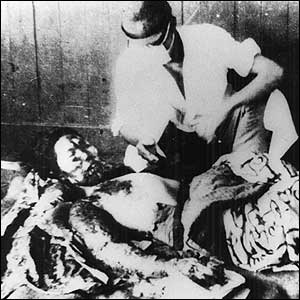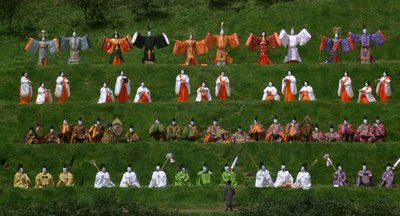The Alliance Française presented a few documentary films by noted film-maker Anand Patwardhan. When it was announced that the first film, ”In the Name of God”, was about politics and the Babri Masjid demolition, I groaned. Politics is one topic I generally avoid like the plague. Never been interested. I am of the kind who believes that the word “politics” is derived from the following words:
Poly: Greek word for “Many”
Tick: Bloodsucking creatures
I however decided to stick on and watch the film because I had nothing better to do. What I saw for the next 75 minutes was very disturbing.
”Long ago” to 1949.
Ayodha. The birthplace of Lord Ram. A town where hindus and muslims co-existed peacefully. They respected and loved one another. The exact spot of Lord Ram’s birth had always been a mystery to one and all. A hundred temples in Ayodhya claimed to be the birth-site of Lord Ram.
Babri Masjid was a 16th century mosque built in Ayodhya by Emperor Babar. It was rumoured for many decades that the Babri Masjid was built after demolishing a Ram temple which was the exact birth-site of Lord Ram. This rumour however did not strain relationships between hindus and muslims. A temple was built near the mosque. The temple was called the “
1949.
One night, the priest of the
1990.
The Muezzin still waits for that Friday.
The Vishwa Hindu Parishad (VHP), a political party digs up the Ram Janmabhoomi issue and declares that the Babri Masjid was indeed the birth-site of Lord Ram. The VHP vows to demolish the mosque and build a new Ram temple there.
While the VHP activists’ words drip of religious intolerance, it is surprising to find that the common man talks about this issue in a very practical and logical way. Many interviews with the common man (mostly illiterate and belonging to a very low caste) reveal that he is more intelligent that the media portrays him to be. An ironworker in a village displays higher levels of intelligence than a VHP activist who is a lawyer.
''The VHP leaders tell everyone that they’d go to any length to build the Ram temple here. Have they come to this temple at least once to offer their prayers?''
-x-
(Shri Laldas was assassinated in 1992, after this documentary was released. The assailants are unknown and scot-free.)
The interviewed VHP activists, on the other hand, turn out to be educated but illogical people. Most of them brandish swords and tridents. The film actually captures them first rehearsing and then loudly chanting these slogans at public meetings:
-x-
“We will use the oil of Dabur!
To burn the descendents of Babar!”
“Babri Masjid hamari hai!
Kasi,
(Babri Masjid is ours, Kasi and
-x-
The film also captures the plight of muslims in Ayodhya who live every day in uncertainty and can “smell death around the corner”.
-x-
Awards won by In the Name of God:
Filmfare Award, Best
National Award, Best Investigative Doc.
Ecumenical Prize,
Documentary Prize,
Citizen’s Prize,
-x-
In the Name of God is thought-provoking. It is very, very hard-hitting. It talks about blind faith and the alarming decline of humanity in today’s world. It is definitely not a film you’d want to watch with your family on a nice evening over biscuits and tea.
I sincerely hope this film becomes irrelevant over time.
The film ends (so does this review) with a
Saints, I see the world is mad.
If I tell the truth they rush to beat me,
If I lie they trust me.
I’ve seen the pious Hindus, rule followers,
Early morning bath takers –
Killing souls, they worship rocks.
They know nothing.
I’ve seen plenty of Muslim teachers, holy men
Reading their holy books
And teaching their pupils techniques.
They know just as much.
And posturing yogis, hypocrites,
Hearts crammed with pride,
Praying to brass, to stones, reeling
With pride in their pilgrimage,
Fixing their caps and prayer beads,
Painting their brow-marks and arm-marks,
Braying their hymns and their couplets,
Reeling. They never heard of Soul.
The Hindu says Ram is the Beloved,
The Turk says Rahim,
Then they kill each other.
No one knows the secret.
They buzz their mantras from house to house,
Puffed with pride.
Their pupils drown along with their gurus.
In the end they’re very sorry.
Kabir says, listen saints:
They’re all deluded!
Whatever I say, nobody gets it.
Its so simple.
--
© Guru Smaran















